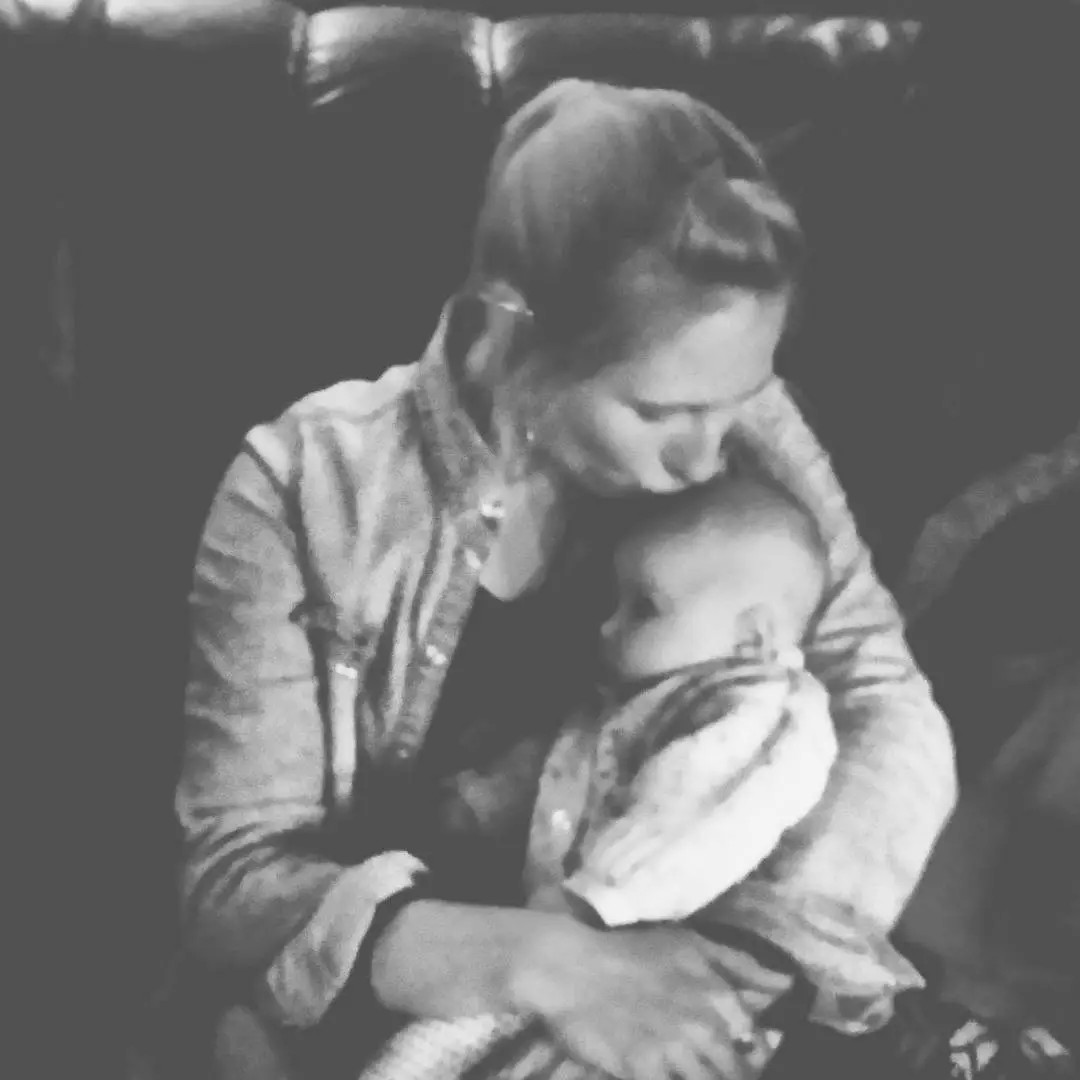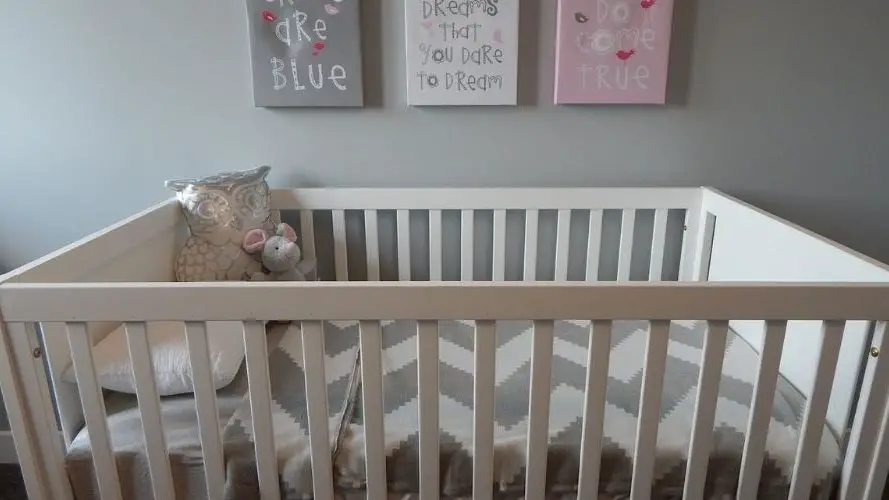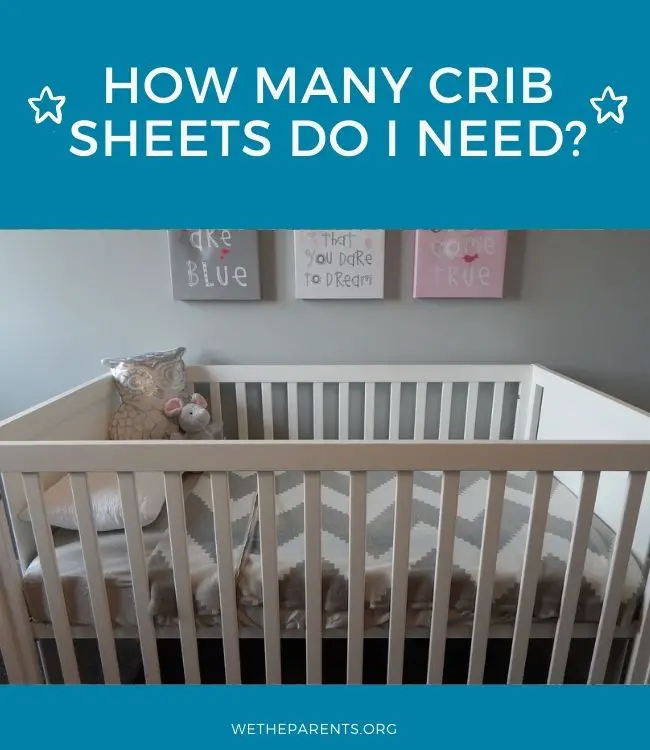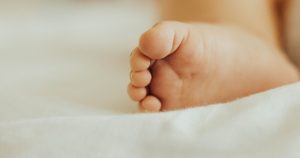There’s nothing quite like seeing baby snuggled up in their crib, knowing they’re safe, sound, and off to dreamland.
Then comes the diaper blowout, the 3 a.m. screaming, and, of course, the necessary sheet change! It’s not a time when any of us want to reach for the linen closet and come up empty-handed.
How many crib sheets you’ll need for your baby depends on several factors — the chief ones being your child’s age, and how often you’re okay with doing laundry.
So let’s dive in.
Buying fitted sheets for the crib — things to consider
Mattress size
There are two primary crib mattress sizes, standard and mini. A set of standard sheets won’t fit on a mini-sized mattress, and vice-versa.
Know what mattress size you want in order to avoid a bad fit. Oversized sheets that don’t fit securely on the mattress can pose a SIDS risk to your newborn. 1pediatrics.aappublications.org SIDS and Other Sleep-Related Infant Deaths
Though less common, some cribs are shaped and have specialty sheets designed exclusively for that particular model. The Stokke Sleepi is a popular example of this type of crib.
Breathability
If you’ve ever had the pleasure of holding a baby (or a toddler) on a hot summer day, you’ll know they can sweat like a marathon runner.
This means that breathable clothes and sheets will help prevent moisture from lingering on your baby’s delicate skin, causing irritation.
Sheets made from 100% cotton or bamboo viscose are soft, hypoallergenic, and breathable, and are favored by many new parents.
Washability
Materials with complex cleaning instructions have become incompatible with new parenthood, so choose sheets that you can throw into the washer without a second thought.
Fortunately, most crib sheets fit that description, especially the breathable cotton and bamboo viscose ones that are best for your baby.
Avoid silk or satin crib sheets, and most products that are described as “luxury”. They’re cute in theory, but can prove extremely impractical.
Allergies and sensitive skin
Sensitive skin is becoming more common in new babies, with certain fabrics being a significant trigger.
This means that when purchasing crib sheets, mattress or bassinet covers, and changing pad covers, fabrics like polyester, wool, and fleece should be skipped over in favor of breathable bamboo and cotton, which are less likely to irritate an infant’s delicate skin.
How many crib sheets do I need?
As we mentioned in the beginning, your child’s age, and your willingness and ability to devote time to laundry, play a big part in answering this question.
How often you intend to change your child’s bedding is also part of the equation — at least once a week is recommended, though, with a newborn, you might want to change the sheets more often.
Newborn – 12 months
The first year of your child’s life is likely to be the peak of your bed-changing duties.
Because newborns don’t move around much, they tend to get sweaty quickly, meaning sheets can get yucky in the span of a day. We won’t even talk about spit-up and drool!
Newborns also have virtually no bladder or bowel control, so diaper blowouts and accidents in the crib are a common occurrence.
Parents often add a fitted waterproof mattress protector to the crib or bassinet mattress under the sheet to prevent damage and odor.
Our recommendation: Keep at least two or three sheets handy if you’re willing to do laundry frequently.
Otherwise, consider keeping five or six available; as backed-up laundry, and sudden catastrophic messes, both tend to sneak up quickly on new parents.
12 Months and beyond
Now that your child has grown significantly, they’ll be spending a lot less time in their crib. This, of course, means less chance of potential messes.
While babies between 12 and 18 months may still have the occasional messy diaper, once they’re weaned off breastfeeding, blowouts and spit-ups are less common.
Some babies begin potty training between 18 to 24 months, reducing the likelihood of accidents even further, though the number of bed changes could spike somewhat as they switch from diapers and pull-ups to big kids’ underwear.
Even though little ones are less prone to turn their cribs into a war zone when past the newborn years, this doesn’t discount the possibility of sickness.
Not only can a sudden stomach bug wreak havoc on your toddler’s sheets, but can also deposit plenty of pesky germs you’ll want to remove as quickly as possible (preferably with a clean, replacement sheet at the ready).
Our recommendation: Two or three sheets remain your minimum requirement, as you can’t afford to be with less if your tot gets the flu or has an accident.
Four or five sets of crib sheets will always keep you covered, even though you might not need them; but if frequent bed changes again become necessary, you’ll be glad to have them.
Mattress pads, bassinet covers, and changing pad covers
Places where your baby spends a lot of time, like their bassinet, crib, or changing pad, are the most likely to fall victim to messy accidents.
That’s why many parents use waterproof covers on these items to prevent permanent damage and lingering odor.
Mattress pads
Functioning much like a sheet, a mattress pad fits snugly over your baby’s crib mattress.
Some function like sheets, using a sewn-in, elastic band that sits beneath the mattress, while other covers work more like zippering pillowcases into which the mattress easily slides.
A fitted crib sheet should be placed over the mattress pad, as the pad or cover itself is unlikely to be breathable or comfortable for your baby.
Only one mattress pad is needed at a time, though you may wish to replace it after wear and tear.
IMPORTANT NOTE: Only use fitted crib sheets which fit securely around the mattress pad or cover of choice, or choose fitted crib sheets with built-in waterproof inserts. Poorly fitting and non-fitted sheets pose a SIDS risk.
Bassinet covers
A bassinet cover is little more than a mattress pad for your baby’s bassinet, though finding one that fits can sometimes prove challenging.
Though there are standard specs for bassinet mattresses (approximately 30-33” x 15-18” x 2”), there are also extra-thick ones and those with brand-specific sizing.
If your bassinet mattress is a non-standard size or shape, you may have to order a cover from your brand’s manufacturer to guarantee a good, safe fit.
As with mattress covers, it’s essential that you choose a fitted sheet that secures over the cover in order to avoid SIDS risk. 2pediatrics.aappublications.org SIDS and Other Sleep-Related Infant Deaths
Changing pad covers
Your baby spends less time on the changing table than in their crib or bassinet, but it’s also an area where messes frequently happen.
A waterproof sheet that slips over the changing pad increases its longevity by catching bacteria, preventing stains and odors, and making cleanup much easier.
Unlike mattress pads and bassinet covers, changing pad covers need to be washed more frequently and are smaller and less expensive. Having three or four on hand is usually sufficient.
Our takeaways
When choosing fitted sheets for your crib, consider the baby’s age.
While parents of infants might wish to keep five or six sets of crib sheets on hand, toddler parents can make do with four or five.
Parents who don’t mind doing laundry frequently could get away with less, but we don’t recommend less than two or three sets to avoid being caught off guard.







